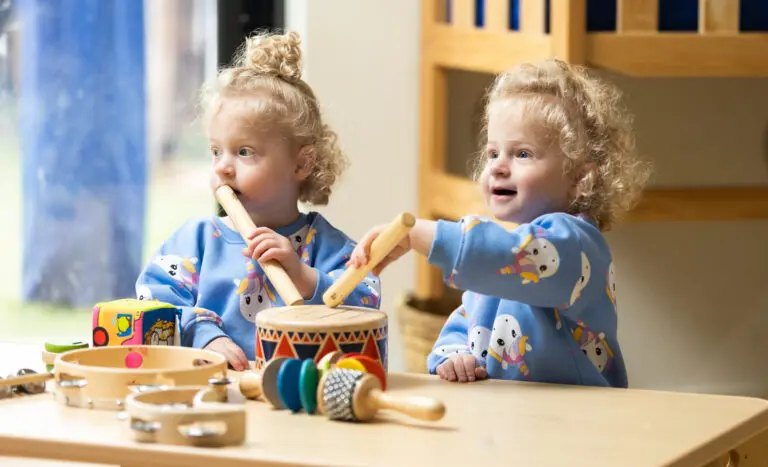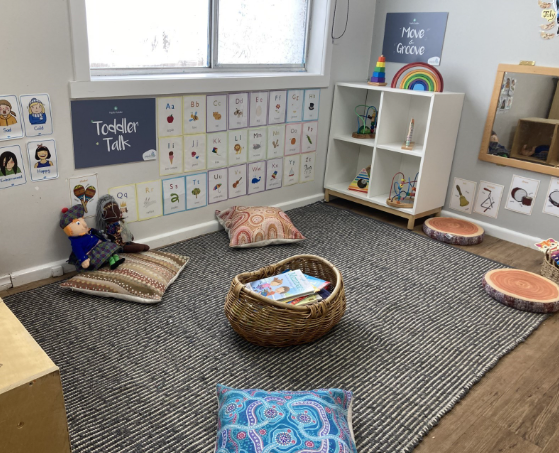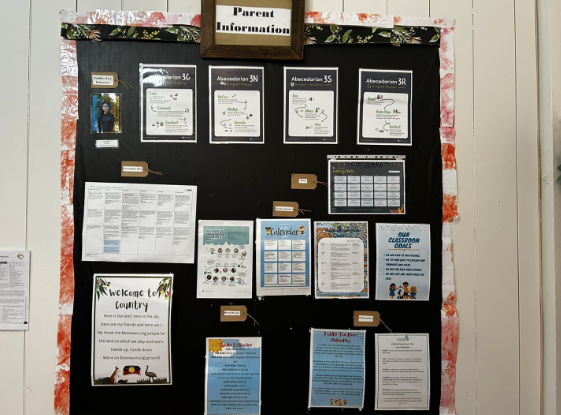
The Lifelong Learning Curriculum was developed through extensive study of how children learn, what they learn and where they learn. At the Early Experiences age, research shows that children are learning to express themselves through oral language. Research also shows that children begin to explore the expectations, boundaries, and limitations within social interactions. Children between the ages of 1 and 3 are naturally curious, use their language development skills, and learn an understanding of social interactions to express themselves.
It is no wonder most families report their children are "running the house," "being the boss of everyone", or an active lover of the words "no and stop." Our educators use the data this research provides to ensure the learning environment is language-rich. Using data ensures that children develop a range of vocabulary to express their needs and curiosities effectively. Committing to reading and using the Abecedarian Strategies: See, Say, Show, when reading with children is an effective strategy for language development. To ensure this is evident for families, our educators label the learning areas within each room to communicate what learning may be occurring in that space.
In addition to the Lifelong Learning Curriculum, the Australian Early Development Census (AEDC) provides crucial research data to inform how children have developed before starting school. It emphasizes five key developmental domains. To read further, access the link below;
Conversations – We often hear parents say, "They're so different here than at home," so discussing with families affirms what we know of children or gives us added information about a child.
How do educators use conversational data?
- To set goals for children's learning.
- To include new and emerging interests
- To support children's sense of belonging
The conversations families have with educators are invaluable. It gives educators access to data we could only know if we lived with you.
Observations—Progress records and learning stories are also key forms of data that inform children's learning. They are an ongoing celebration and recognition of each child's growth within the service. Using observations, educators can often track children's progress in mastering a skill and the key learning components recognized within the AEDC.
Conclusion:
Data gathering is often thought of as uninteresting. However, early childhood opens a world of exciting discoveries for children's learning. Our research, conversations, and observations are vital in ensuring that the learning environment and program meet your child's developmental needs. The best way you can help is to share.


